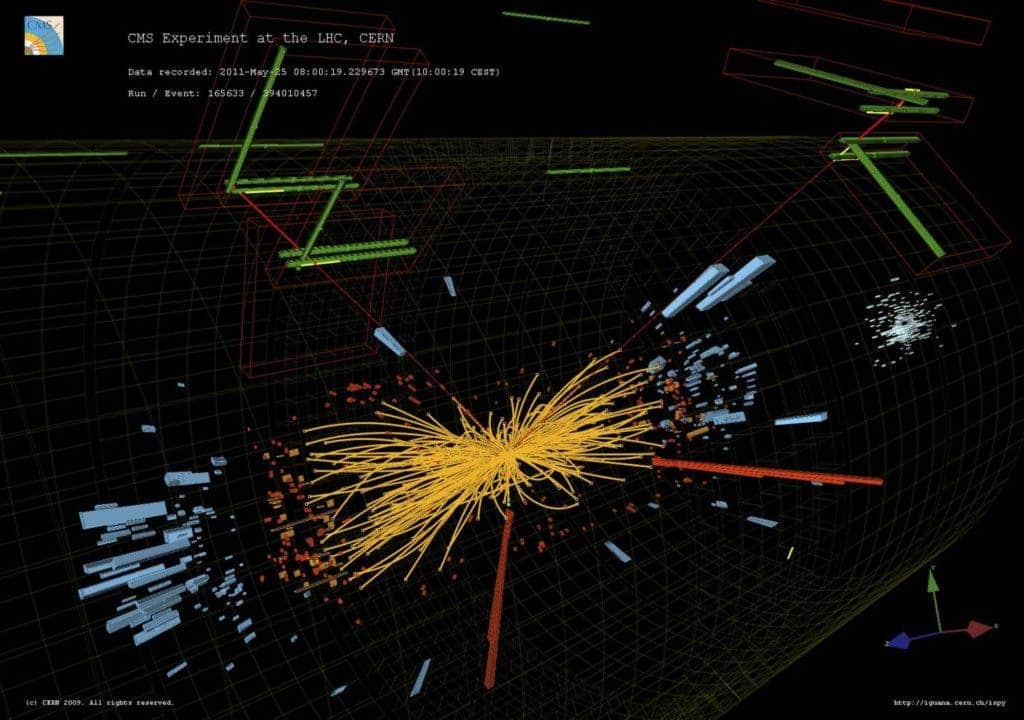The mountains of data retrieved back in 2012 when physicists were trying to confirm the existence of the Higgs boson could yield a new and unexpected find — a new particle dubbed the Madala boson.

The first evidence of the Madala boson was seen in the data recorded at CERN in 2012 from the Large Hadron Collider (LHC,) says the High Energy Physics Group (HEP) from South Africa’s Withstander University. The new particle’s case has since been strengthened by repeat experiments in 2015 and 2016.
“Based on a number of features and peculiarities of the data reported by the experiments at the LHC and collected up to the end of 2012, the Wits HEP group in collaboration with scientists in India and Sweden formulated the Madala hypothesis,” says Professor Bruce Mellado, team leader of the HEP group at Wits.
“The experiments at the Large Hadron Collider (LHC) display a number of hints in their data that are indicative of the existence of new bosons,” their report reads.
Its existence hasn’t yet been confirmed, but the group claims that if their ‘Madala hypothesis’ is correct, then we could finally begin to understand dark matter. This amounts to an estimated 27 percent of all the mass and energy in the observable Universe, but otherwise, it’s completely foreign to us. We can’t touch it, we can’t see it…the only way we know it’s there is because we can detect its gravitational pull — and nothing else.
So it’s hardly surprising that, despite years of trying to figure out, we have no clue what dark matter actually is. The way scientists are going about it today is to find out what it isn’t, hoping we’ll have enough data to explain it at some point in the future.
“Physics today is at a crossroads similar to the times of Einstein and the fathers of Quantum Mechanics,” said Mellado.
“Classical physics failed to explain a number of phenomena and, as a result, it needed to be revolutionised with new concepts, such as relativity and quantum physics, leading to the creation of what we know now as modern physics.”
When they confirmed the existence of the Higgs boson four years ago, physicists finally verified the Standard Model of Physics. But even the fully fleshed model can’t explain the existence or properties of dark matter. The Madala boson would do just that — if it’s real. As Mellado and his team explain, while the Higgs boson only interacts with known matter, the Madala boson seems to interact only with dark matter.
The four fundamental forces are gravity, electromagnetism and the weak and strong nuclear forces. Each force has a corresponding boson or force carrier that gives rise or mediates the forces between other particles. For instance, the electromagnetic force is carried by photons — perhaps the most famous particles — while weak and strong forces are carried by W bosons, Z bosons, and gluons, respectively. Though we’ve yet to find a force carrier particle for gravity, physicists predict there should be one, for now hypothetically called a graviton.
The discovery of the Higgs boson did not signify the discovery of a new force or family of particles, but the Madala boson might.
Details of the discovery are still scarce, but what we do know up to now has been outlined in the South African scientific collaboration with CERN’s 2015-2016 Annual Report (SA-CERN.) Here, the Madala boson is described as having a mass of around 270 giga electronvolts (GeV) – or roughly 270 billion electron volts. To put that into perspective, the Higgs boson has a mass of either 123.5 GeV or 126.5 GeV. The paper also details how the same repeat experiments that strengthened the case for the Madala boson also suggested there’s an even heavier potential new boson, weighing in at a whopping 750 GeV, waiting to be found…maybe. We don’t know. It’s all an educated guess at this point.

So right now, we just have to play the waiting game until the teams come up with more evidence and the physics community gets a chance to analyze them. But should these new particles be confirmed, it will set the world of physics alight.
“The significance of the discovery of new bosons goes beyond that of the Higgs boson. The Higgs boson was needed to complete the Standard Model of Particle Physics,” the SA-CERN report reads.
“However, this boson did not signify the discovery of a new force or family of particles. The discovery of new bosons would be evidence for forces and particles formerly unknown. Therefore, and without a reasonable doubt, the discovery of new bosons would be worth a Nobel Prize in Physics.”
Update:
Since we’ve written this article, CERN has tweeted this:
Sorry guys, but there is no evidence so far in the #LHC data to support the existence of a hypothetical #Madala#boson
— CERNpress (@CERNpress) September 7, 2016
So does this mean there isn’t such a thing as the Madala boson? Not necessarily, it just means that there isn’t any data to support its existence in the LHC measurements. Something obviously went wrong here — someone from HEP jumped the gun or their findings just didn’t stand up to scrutiny.
Stay tuned for more updates.


